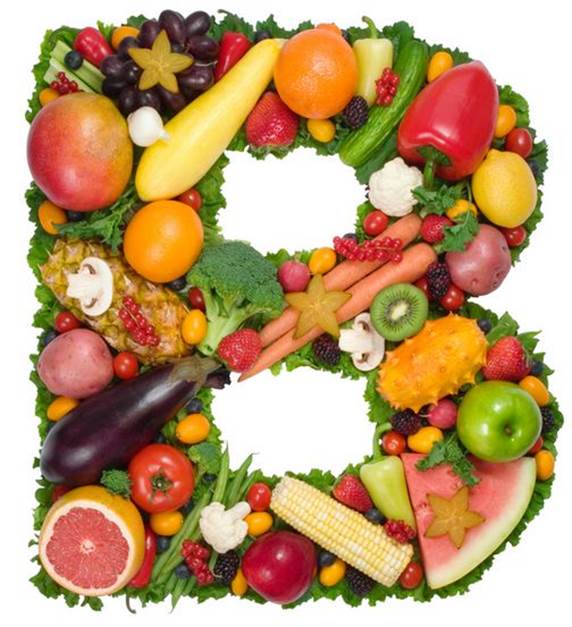Eating ‘right’ can help your body
lose fat, get leaner and stronger and generally help you optimally adapt to
your workouts. And in this respect the ‘sparkplugs of your nutrition vitamins
(and minerals) are crucial. We provide an overview and then look at one of the
most important Folic acid (B3).
Vitamins are micronutrients – they are
crucial for the cellular reactions that occur in your body, although they do
not supply energy themselves. A deficiency can lead to less than optimized
training and much worse poor health.

A
deficiency can lead to less than optimized training and much worse poor health.
Selected Vitamin Functions
·
Support the immune system
·
Aid brain function
·
Prevent illness
·
Aid the conversion of food into energy
·
Important for healthy skin and hair
·
Control growth
·
Regulate hormones
How much is the RDA?
Exercise will increase your body’s
micronutrient needs. The Recommended Daily Allowance (RDA) for an athlete/fitness
trainer may therefore be significantly higher than for someone who is
sedentary. RDA as listed on food and supplement labels are estimates of the
nutrient requirements set by the EU and are designed to cover the general needs
of the population. The amounts are set to avoid deficiency symptoms. They are
in fact quite low and do not account for even a little storage and obviously
cannot reflect significant individual differences between people’s needs. So,
RDA’s should only be regarded as guides and not as definitive statements as to
the amounts of vitamins and minerals you should consume.
In many cases people do not get their RDA,
let alone the amount of vitamins and minerals needed for optimal bodily
function. For example, a study published by the American Medical Association
concluded that most people don’t get sufficient amounts to protect themselves
from diseases such as cancer and heart disease.

In
many cases people do not get their RDA, let alone the amount of vitamins and
minerals needed for optimal bodily function.
How to maximize your vitamin consumption
·
Buy locally grown produce, ideally from shops
and local markets
·
Buy British if you can imported produce is
usually imported under-ripe and this means that it will not have developed its full
vitamin content. Transportation will reduce this even more
·
Buy un-marked fruit and vegetables
·
Prepare your fruit and veg just before you make
your salad – as soon as you chop an apple or a carrot etc, they will start to
lose their valuable micronutrient content
·
Try to eat your fruit and veg with the skin on –
many of the vital nutrients contained in them are found just below the skin’s
surface
·
Cut fruit and vegetables into large pieces as
vitamins are lost from cut surfaces
·
Steam and boil vegetables in only the minimum
amount of water
·
Blanch them in boiling water otherwise you will
boil away much of their micronutrient content
·
Save the cooking water for soups, stocks and
sauces
·
Do not re-heat leftover cooked veg, as they will
have lost most of their nutritional value

Steam
and boil vegetables in only the minimum amount of water
Vitamin Focus
Folic Acid
Folic acid is also known as vitamin B9 or
Folate. Although there are several biologically active forms of the vitamin,
once in the body it is rapidly converted to a biologically active form known as
B3 dependent enzyme (called NADPH) and vitamin C.

Folic
acid is also known as vitamin B9 or Folate.
Why do we need it?
Folic acid is crucial for optimum amino
acid metabolism and brain function in particular in regard to the
neurotransmitters that regulate sleep, pain and mood. If we have a deficiency
we can suffer from irritability and apathy and mental illnesses, including
schizophrenia.
Low levels of Folic acid have also been
linked to folate deficiency ammonia (too many red blood cells are produced and
they cannot function optimally, constant lethargy is a potential symptom) and
an increased risk of heart disease, certain types of cancer, Alzheimer’s
disease, osteoporosis and inflammatory bowel disease.
Folic acid is very important during periods
of ‘high growth’ i.e. adolescence and pregnancy, this is because it aids in the
production of DNA.
Folic acid also works closely with B12 to
regulate the formation of red blood cells and to help iron function properly in
the body.

Folic
acid also works closely with B12 to regulate the formation of red blood cells
and to help iron function properly in the body.
How much Folic acid do we need?
Children
·
1-3 years 70mcg/day
·
4-6 years 100mcg/day
·
7-10 years 150mcg/day
Males over:
11200mcg/day
Females over: 11200mcg/day
Pregnant or women planning to become
pregnant: 400mcg/day
Note: many
women do not get sufficient Folic acid in their diet to meet the basic 200mcg
recommended amount.

many
women do not get sufficient Folic acid in their diet to meet the basic 200mcg
recommended amount.
Consequentially it has been recommended
that women of child-bearing age supplement with at least 400mcg a day.
Can I get too much Folic acid?
Yes, although Folic acid is a relatively
non-toxic vitamin, doses above 1000mcg a day can mask an underlying vitamin B12
deficiency – which if left un-treated could damage the nervous system.